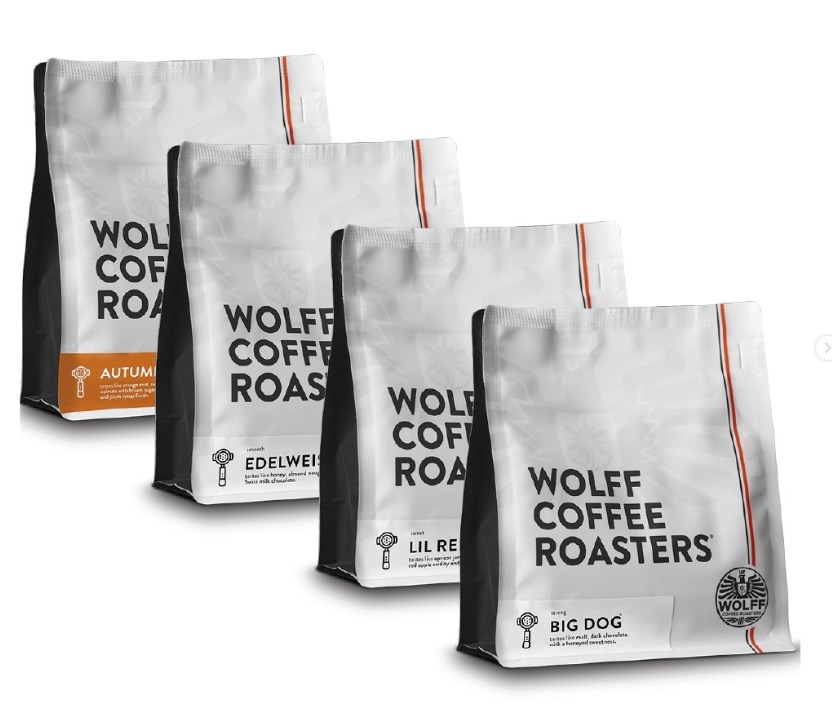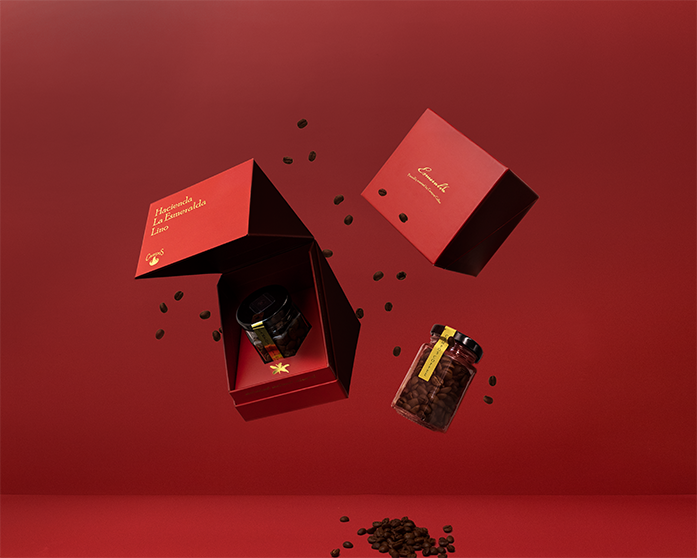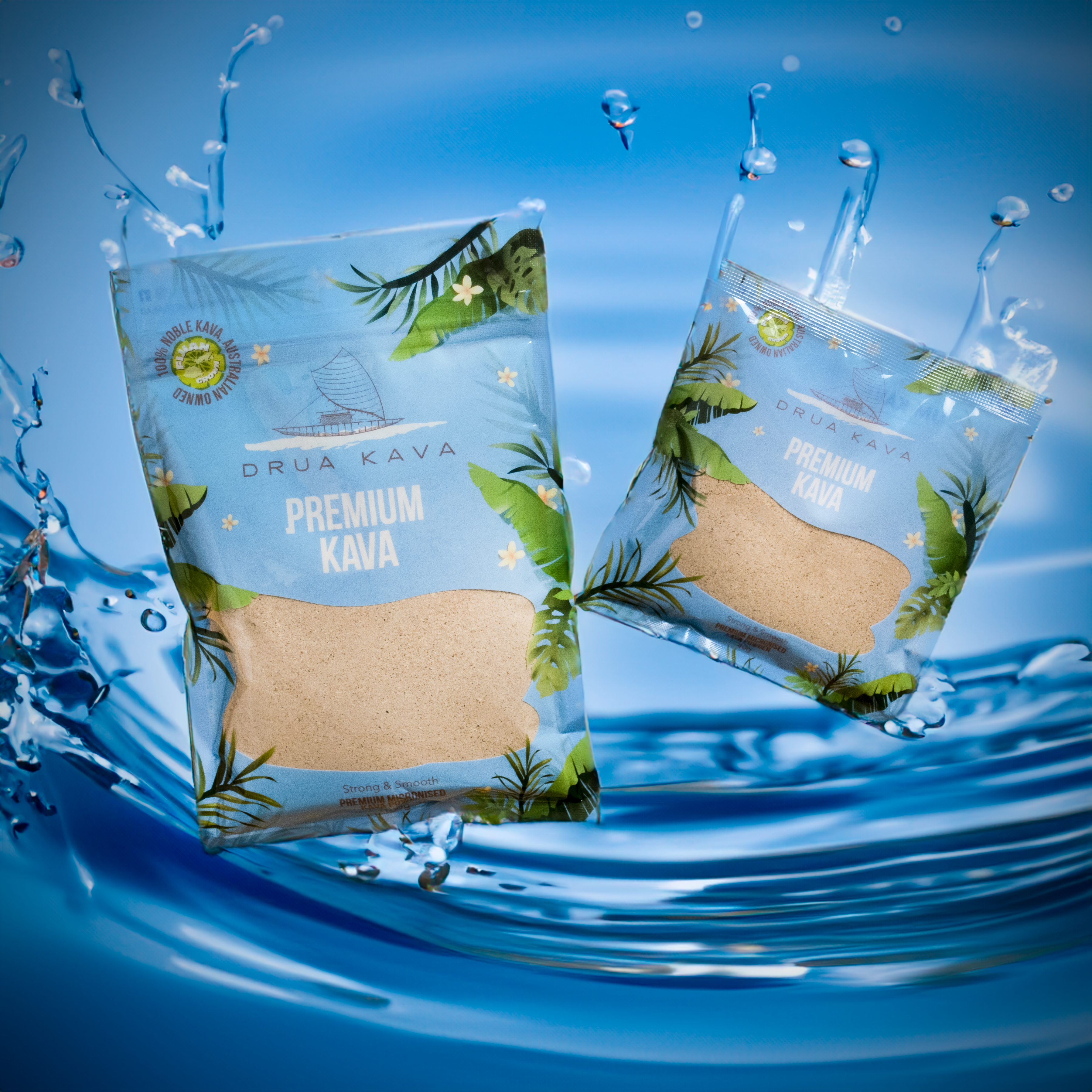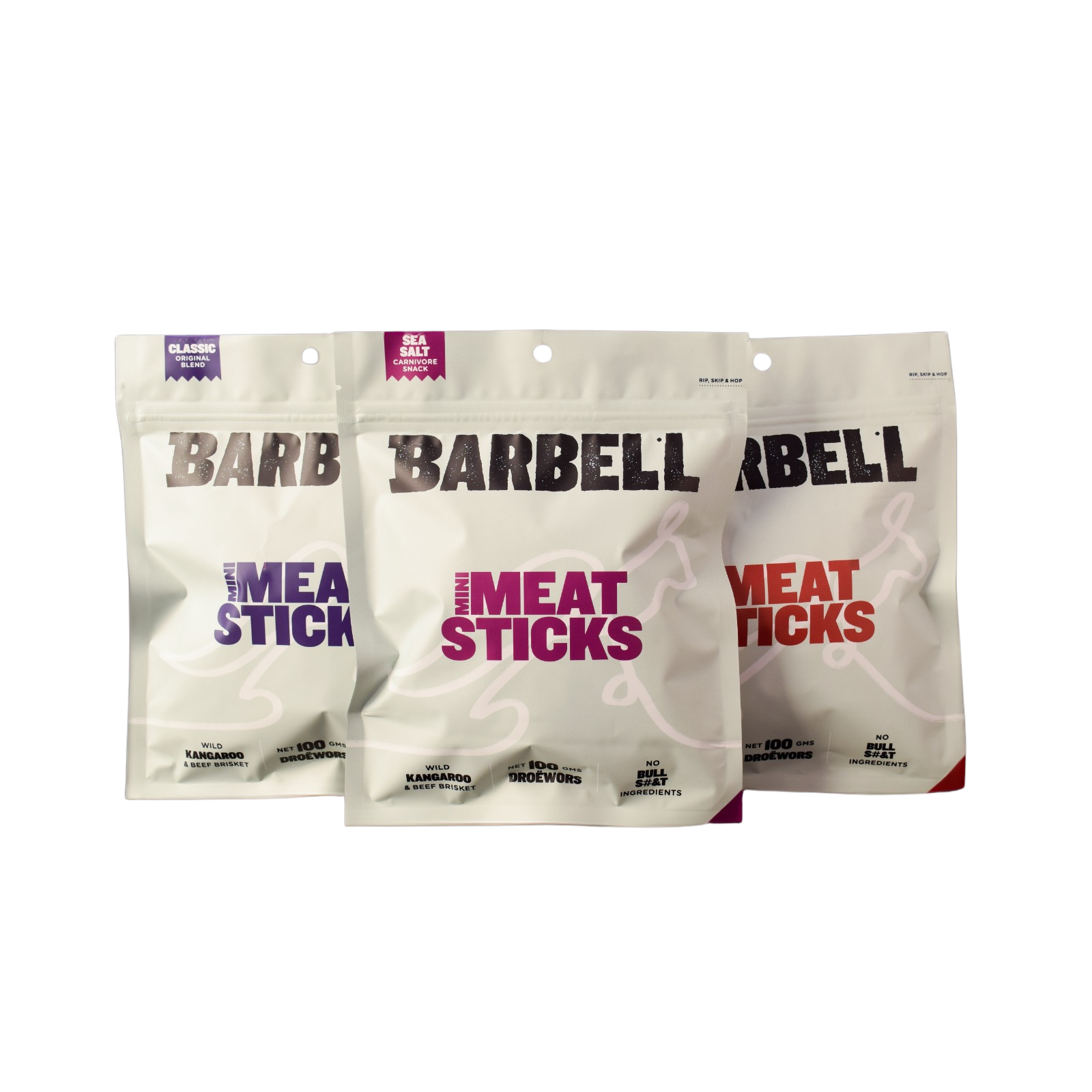Sustainable Packaging Insights
In a world increasingly aware of its environmental footprint, sustainable packaging has moved from being a buzzword to an essential business strategy. As we edge closer to 2025, the need for recyclable food packaging is more critical than ever, offering businesses a path to sustainability and a way to attract eco-conscious consumers. From innovative materials to advanced recycling technologies, the landscape of packaging is rapidly evolving, presenting both challenges and opportunities for businesses ready to adapt. In this post, we'll delve into the latest trends and insights on sustainable packaging, empowering you to make informed choices that not only enhance your brand's reputation but also contribute to a more sustainable future. Whether you're a small business owner or a seasoned food producer, it's time to embrace these changes and lead the way in eco-friendly practices.

Why Recyclable Food Packaging Is a Must
As we approach 2025, recyclable food packaging is no longer just a trend – it's a necessity. Let's explore why it's crucial for your business and how it can attract eco-conscious consumers.
Benefits for Business Sustainability
Recyclable food packaging offers numerous advantages for businesses aiming to enhance their sustainability efforts. By adopting these eco-friendly solutions, companies can significantly reduce their environmental impact while improving their bottom line.
One of the primary benefits is the reduction of waste sent to landfills. This not only helps conserve natural resources but also lowers disposal costs for businesses. Additionally, recyclable packaging often requires less energy to produce, leading to reduced carbon emissions and lower production expenses.
Implementing recyclable packaging can also enhance a company's reputation, potentially leading to increased market share and customer loyalty. As more consumers prioritize sustainability, businesses that embrace recyclable packaging position themselves as leaders in environmental stewardship.
Moreover, many governments are introducing regulations that favor or mandate recyclable packaging. By adopting these practices early, businesses can stay ahead of compliance requirements and avoid potential fines or penalties.
Attracting Eco-Conscious Consumers
The rise of eco-conscious consumers has created a significant shift in purchasing behaviors. These environmentally aware shoppers are actively seeking products with sustainable packaging, making it a crucial factor in their buying decisions.
By offering recyclable food packaging, businesses can tap into this growing market segment. Eco-conscious consumers are often willing to pay a premium for products that align with their values, potentially increasing profit margins for companies that make the switch.
Transparent communication about packaging sustainability can build trust and loyalty among these consumers. Many are eager to support brands that demonstrate a genuine commitment to reducing environmental impact.
Social media and word-of-mouth marketing play a significant role in attracting eco-conscious consumers. Sustainable packaging choices can become a talking point, leading to increased brand visibility and positive associations.
Lastly, by catering to eco-conscious consumers, businesses can create a ripple effect, encouraging more people to consider the environmental impact of their purchases and potentially expanding the market for sustainable products.
Top Sustainable Packaging Trends to Watch
As we look towards 2025, several exciting trends are emerging in sustainable packaging. Let's explore the innovative materials, technologies, and design concepts shaping the future of eco-friendly packaging.
Emerging Materials and Technologies
The sustainable packaging industry is witnessing a surge in innovative materials and technologies that promise to revolutionize how we package and consume products. These advancements are paving the way for more environmentally friendly solutions.
Bioplastics derived from renewable sources such as corn starch, sugarcane, or algae are gaining traction. These materials offer biodegradability and compostability, reducing the environmental impact of packaging waste.
Nanotechnology is being applied to create stronger, lighter, and more sustainable packaging materials. For instance, nanocellulose, derived from plant fibers, shows promise as a recyclable and biodegradable alternative to traditional plastics.
Edible packaging, made from materials like seaweed or milk proteins, is emerging as a zero-waste solution for certain food products. This innovative approach eliminates packaging waste entirely.
Smart packaging technologies, such as QR codes and NFC tags, are being integrated into sustainable packaging designs. These allow consumers to access product information and recycling instructions easily, promoting proper disposal and recycling practices.
Design Innovations for 2025
The future of sustainable packaging is not just about materials; it's also about innovative design concepts that minimize waste and maximize efficiency. These design trends are set to transform the packaging landscape by 2025.
Minimalist packaging is gaining popularity, focusing on reducing excess material while maintaining product protection. This approach not only cuts down on waste but also appeals to consumers seeking simplicity and sustainability.
Modular packaging designs are emerging as a versatile solution. These designs allow for easy disassembly and recycling of different components, making the recycling process more efficient and effective.
Reusable packaging systems are becoming more prevalent, especially in the food and beverage industry. These designs encourage consumers to return and refill containers, significantly reducing single-use packaging waste.
Packaging that serves multiple purposes, such as transforming into toys or household items after use, is another innovative trend. This approach extends the life of packaging materials and reduces overall waste.
Lastly, advances in 3D printing technology are enabling the creation of custom, on-demand packaging solutions. This reduces overproduction and allows for more efficient use of materials in packaging design.
How the Future of Food Packaging Is Shaping Up
The food packaging industry is undergoing a significant transformation, driven by environmental concerns and technological advancements. Let's examine the key developments and their implications for businesses.
Key Developments in Packaging
The future of food packaging is being shaped by a combination of innovative materials, advanced technologies, and changing consumer preferences. These developments are set to redefine how food products are packaged and consumed.
Biodegradable and compostable materials are becoming increasingly prevalent. Made from renewable resources like plant starches or cellulose, these materials break down naturally, reducing long-term environmental impact.
Smart packaging technologies are gaining traction, incorporating features like freshness indicators and temperature sensors. These innovations help reduce food waste by providing real-time information about product quality and safety.
Active packaging solutions, which interact with the food to extend shelf life or improve quality, are becoming more sophisticated. This includes packaging that absorbs oxygen or releases antimicrobial agents to preserve food freshness.
Lightweight packaging designs are being developed to reduce material use and transportation costs. These solutions maintain product protection while minimizing the overall environmental footprint of packaging.
Mono-material packaging, designed to be easily recyclable, is becoming more common. By using a single type of material, these packages simplify the recycling process and increase the likelihood of successful recycling.
Implications for Business Strategy
The evolving landscape of food packaging has significant implications for business strategies across the food industry. Companies must adapt to these changes to remain competitive and meet consumer expectations.
Businesses need to invest in research and development to stay ahead of packaging innovations. This may involve collaborating with material scientists and packaging designers to create unique, sustainable solutions.
Supply chain adjustments may be necessary to accommodate new packaging materials and technologies. This could include sourcing new suppliers, updating production processes, or investing in new packaging equipment.
Marketing strategies should highlight sustainable packaging efforts to appeal to eco-conscious consumers. Transparent communication about packaging materials and disposal methods can build trust and loyalty among customers.
Companies may need to reevaluate their pricing strategies. While sustainable packaging can lead to cost savings in some areas, initial investments may be higher. Businesses must balance these costs with potential premium pricing for eco-friendly products.
Lastly, businesses should consider the global regulatory landscape. As more countries implement strict packaging regulations, companies with sustainable packaging solutions will be better positioned to enter new markets and comply with evolving standards.
The Impact of Recycling Trends on Your Small Business
Recycling trends are rapidly evolving, and small businesses need to stay informed and adaptable. Let's explore how these trends are affecting businesses and how you can lead with sustainable choices.
Adapting to Evolving Practices
The recycling landscape is constantly changing, with new technologies, regulations, and consumer expectations emerging. Small businesses must be agile in adapting to these evolving practices to remain competitive and environmentally responsible.
One key trend is the increased focus on closed-loop recycling systems. This approach aims to keep materials in use for as long as possible, reducing waste and conserving resources. Small businesses can explore ways to participate in or create closed-loop systems for their packaging.
Extended Producer Responsibility (EPR) policies are gaining traction globally. These policies make manufacturers responsible for the entire lifecycle of their products, including disposal and recycling. Small businesses should stay informed about EPR regulations in their regions and prepare accordingly.
Consumer demand for transparency in recycling practices is growing. Small businesses can respond by clearly communicating their recycling efforts and providing guidance on how customers can properly recycle their packaging.
Advancements in recycling technologies are opening up new possibilities for materials that were previously difficult to recycle. Small businesses should stay informed about these developments and consider incorporating newly recyclable materials into their packaging strategies.
Leading with Sustainable Choices
Small businesses have a unique opportunity to lead by example in adopting sustainable packaging choices. By making proactive decisions, they can set themselves apart from competitors and appeal to environmentally conscious consumers.
Start by conducting a thorough audit of your current packaging practices. Identify areas where you can reduce waste, increase recyclability, or switch to more sustainable materials. This process can often reveal unexpected opportunities for improvement.
Consider partnering with local recycling facilities or sustainability experts to develop tailored recycling solutions for your business. These collaborations can lead to innovative approaches that benefit both your business and the community.
Educate your staff about the importance of sustainable packaging and recycling practices. Empowered employees can become advocates for your sustainability efforts, both within the company and when interacting with customers.
Look for opportunities to innovate in your packaging design. Could you reduce the amount of packaging used? Is there a way to make your packaging reusable? Creative solutions can often lead to both environmental and cost benefits.
Finally, don't be afraid to share your sustainability journey with your customers. Many consumers appreciate businesses that are transparent about their efforts and challenges in becoming more environmentally friendly.
Reducing Packaging Waste: Practical Tips
Reducing packaging waste is a crucial step towards sustainability. Let's explore practical strategies for implementing waste reduction and embracing the circular economy in your business operations.
Implementing Waste-Reduction Strategies
Implementing effective waste-reduction strategies can significantly decrease your business's environmental impact while potentially reducing costs. Here are some practical tips to get started:
Conduct a packaging audit to identify areas of excess waste.
Redesign packaging to use less material without compromising product protection.
Choose materials that are easily recyclable or biodegradable.
Implement a packaging return program for reusable containers.
Educate customers on proper disposal and recycling of your packaging.
Minimalist packaging design can often achieve the same protective function with less material. Consider stripping down your packaging to the essentials, focusing on functionality over excessive branding or decorative elements.
Bulk packaging options can significantly reduce waste for certain products. Offer customers the choice to buy in larger quantities with less packaging per unit.
Explore innovative packaging solutions like concentrated products or refillable containers. These approaches can dramatically reduce the amount of packaging needed over the product's lifecycle.
Lastly, consider the entire supply chain when implementing waste-reduction strategies. Work with suppliers to minimize packaging in your incoming materials and collaborate with distributors to optimize packaging for shipping efficiency.
Embracing the Circular Economy
The circular economy model offers a framework for reducing waste and maximizing resource efficiency. By embracing this approach, businesses can contribute to a more sustainable future while potentially uncovering new opportunities.
Circular economy principles focus on designing out waste and pollution, keeping products and materials in use, and regenerating natural systems. For packaging, this might mean creating products that can be easily disassembled, recycled, or biodegraded.
Implement a take-back program for your packaging. This not only ensures proper recycling but also provides an opportunity to reuse materials in your production process, closing the loop on your packaging lifecycle.
Consider how your packaging can have a second life. Could it be repurposed for another use? For example, some companies design their packaging to be reused as storage containers or even transformed into toys or decorative items.
Collaborate with other businesses in your industry to create shared recycling infrastructure or material recovery facilities. This collective approach can make circular economy practices more feasible and cost-effective for all involved.
Educate your customers about the circular economy and how your packaging fits into this model. Engaged consumers are more likely to participate in recycling and reuse programs, amplifying the impact of your efforts.
Eco-Friendly Packaging: How to Make the Switch
Transitioning to eco-friendly packaging is a significant step towards sustainability. Let's explore how to make this switch seamlessly and the benefits it can bring to your business.
Steps for a Seamless Transition
Making the switch to eco-friendly packaging requires careful planning and execution. Here's a step-by-step guide to help you navigate this transition:
Assess your current packaging: Evaluate your existing packaging in terms of materials, design, and environmental impact.
Research alternatives: Explore eco-friendly materials and designs that suit your product and brand.
Consult with suppliers: Discuss eco-friendly options with your current suppliers or seek new partners specializing in sustainable packaging.
Test and iterate: Conduct trials with new packaging to ensure it meets your product protection and branding needs.
Implement gradually: Start with a product line or limited release to gauge customer response and iron out any issues.
Engage your team in the transition process. From design to logistics, every department should understand the reasons for the switch and their role in making it successful.
Communicate with your customers about the change. Explain the environmental benefits and any differences they might notice in the new packaging. Transparency can help build trust and support for your initiative.
Consider the entire lifecycle of your new packaging. Ensure that it's not only eco-friendly in production but also in disposal or recycling. Provide clear instructions to customers on how to properly recycle or dispose of the packaging.
Benefits of Eco-Friendly Solutions
Adopting eco-friendly packaging solutions can bring numerous benefits to your business, beyond just reducing environmental impact. Let's explore some of these advantages:
Enhanced brand image: Eco-friendly packaging demonstrates your commitment to sustainability, which can improve your brand perception among environmentally conscious consumers.
Cost savings: While initial costs may be higher, eco-friendly packaging can lead to long-term savings through reduced material use, lower shipping weights, and potential tax incentives.
Increased customer loyalty: Many consumers prefer brands that prioritize sustainability. Eco-friendly packaging can help attract and retain these customers.
Compliance with regulations: As environmental regulations become stricter, adopting eco-friendly packaging now can help you stay ahead of compliance requirements.
Innovation opportunities: The challenge of creating sustainable packaging can drive innovation in your product design and manufacturing processes, potentially leading to other improvements in your business.
Circular Economy: Reimagining Packaging Waste
The circular economy model offers a new perspective on packaging waste, transforming it from a problem into a resource. Let's explore this concept and how businesses can contribute to a more sustainable future.
Understanding the Circular Model
The circular economy is an economic system aimed at eliminating waste and maximizing resource use. It's based on three principles: design out waste and pollution, keep products and materials in use, and regenerate natural systems.
In the context of packaging, the circular model encourages designs that facilitate reuse, repair, and recycling. This approach contrasts with the traditional linear "take-make-dispose" model, which leads to significant waste.
Closed-loop systems are a key feature of the circular economy. In these systems, packaging materials are continuously cycled back into the production process, minimizing the need for new raw materials.
The circular model also emphasizes the importance of renewable, bio-based materials that can safely return to the biosphere at the end of their life cycle. This approach helps to reduce dependence on finite resources and minimize environmental impact.
Understanding the circular economy requires a shift in perspective, viewing waste as a design flaw rather than an inevitable by-product. This mindset can drive innovation in packaging design and materials science.
Business Contributions to Sustainability
Businesses play a crucial role in implementing circular economy principles and contributing to a more sustainable future. Here are some ways companies can participate:
Redesign packaging for circularity, focusing on recyclability, reusability, or compostability.
Implement take-back programs to recover and recycle packaging materials.
Invest in recycling infrastructure or partner with recycling facilities.
Educate consumers about proper disposal and recycling of packaging.
Collaborate with other businesses to create shared circular systems.
Material innovation is a key area where businesses can contribute. By developing or adopting new materials that are both functional and easily recyclable, companies can help advance circular economy practices.
Extended Producer Responsibility (EPR) is another important concept. By taking responsibility for the entire lifecycle of their packaging, businesses can ensure that materials are properly recovered and recycled.
Businesses can also contribute by creating demand for recycled materials. Using recycled content in packaging helps to close the loop and create a market for recovered materials.
Lastly, transparency and clear communication about circular economy efforts can help educate consumers and other businesses, spreading awareness and encouraging wider adoption of these practices.
Recycling Improvements: What's New for 2025?
As we approach 2025, the recycling industry is experiencing significant advancements. Let's explore the latest technological innovations and new practices that are shaping the future of recycling.
Technological Advancements in Recycling
The recycling industry is leveraging cutting-edge technologies to improve efficiency, accuracy, and the range of materials that can be recycled. These advancements are set to transform recycling processes by 2025.
Artificial Intelligence (AI) and Machine Learning are being integrated into recycling facilities to improve sorting accuracy. These technologies can identify and separate different types of materials more efficiently than traditional methods, increasing the purity of recycled materials.
Chemical recycling techniques are advancing, allowing for the breakdown of plastics into their chemical components. This process can create high-quality recycled materials suitable for food-grade packaging, addressing a significant challenge in plastic recycling.
Robotics and automation are increasingly being used in recycling facilities. These technologies can handle sorting tasks more efficiently and safely than human workers, particularly for hazardous or contaminated materials.
Advanced optical sorting technologies are improving the ability to identify and separate different types of plastics, even those with similar appearances. This technology is particularly useful for recycling mixed plastic waste.
Blockchain technology is being explored to improve traceability in recycling systems. This could help verify the origin and journey of recycled materials, ensuring transparency and accountability in the recycling process.
New Practices to Embrace
Along with technological advancements, new recycling practices are emerging that businesses and consumers can













